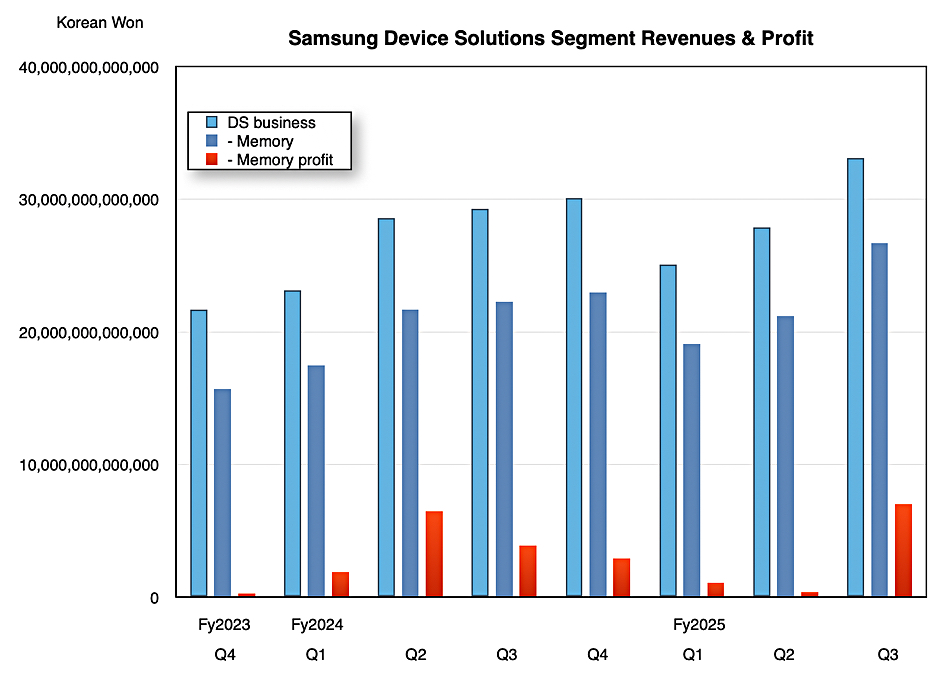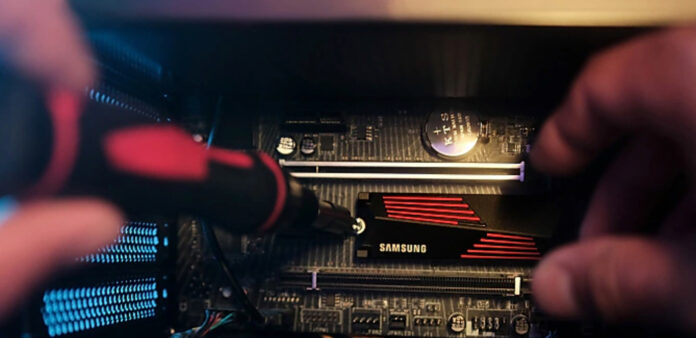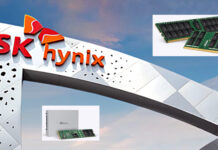Samsung shared in the AI market’s frenzy for fast GPU memory with record high quarterly revenues.
Revenues in its third 2025 quarter were ₩86.1 trillion ($60.3 billion), 8.9 percent higher year/year, with an operating profit of ₩12.2 trillion($8.5 billion), up 32.6 percent Y/Y.
Samsung Electronics makes smartphones, DRAM and NAND chips, display panels, TVs and domestic appliances, laptops, tablets, digital watches and ear buds. From the B&F point of view, we’re interested in Device Solutions (DS) business unit, responsible for its DRAM and NAND manufacturing operations. Its revenue in the quarter was ₩33.1 trillion ($23.1 billion), 13 percent higher than a year ago and up 18.6 percent on the previous quarter. It made a ₩7 trillion ($4.9 billion) profit
The revenue rise was due to increased HBM3E sales, with that type of memory needed by GPU servers, and server SSDs.
In comparison, SK hynix revenues in the quarter for its memory and NAND products was ₩24.449 trillion ($17.1 billion), up 39 percent year/year, with a net profit of ₩12.598 trillion ($8.8 billion), up 118.9 per cent. It made 26 percent less revenue than Samsung but its profits were 80 per cent higher, largely due to selling more HBM chips. Samsung has fallen behind SK hynix with HBM technology and is now concentrating on regaining the lost ground.
The bulk of the Samsung DS segment’s revenues come from memory products. HBM3E is currently in mass production. A chart shows it’s climb out of a first quarter revenue trough, driven by memory sales;

There were record memory revenues in the quarter, and a jump in profitability, due to price increases and also to reduced one-time inventory value adjustments.
The DS unit’s outlook for the fourth 2025 quarter is basically to make and sell as much of its high value products: HBM3E, 128GB DDR5, 24Gb GDDR7, high-capacity eSSDs – as it can while AI-driven and conventional server demand is as high as it is. HBM4 samples are being shipped to key clients as it looks to ride the Nvidia GPU server memory rocket.
Looking at 2026, Samsung will do more of thge same. Demand for HBM4 is projected to increase, and Samsung plans to respond with HBM4 capacity expansion using its 1c node technology. It will prioritize the expansion of its HBM4 business, broaden its HBM sales base, and also look to expand AI-related product sales of DDR5 and LPDDR5x memory, and high capacity QLC SSDs.
The AI market’s need for memory and NAND products is driving furious competition between, and technology developments by, the three main players: Micron, Samsung and SK hynix. We believe this level of activity will be replicated inside China where suppliers and their developments are much less visible. Huawei, for example, denied access to the latest US memory technology, will be encouraging Chinese memory suppliers to ramp up their technology game so that it can continue to compete with US suppliers outside the USA.








